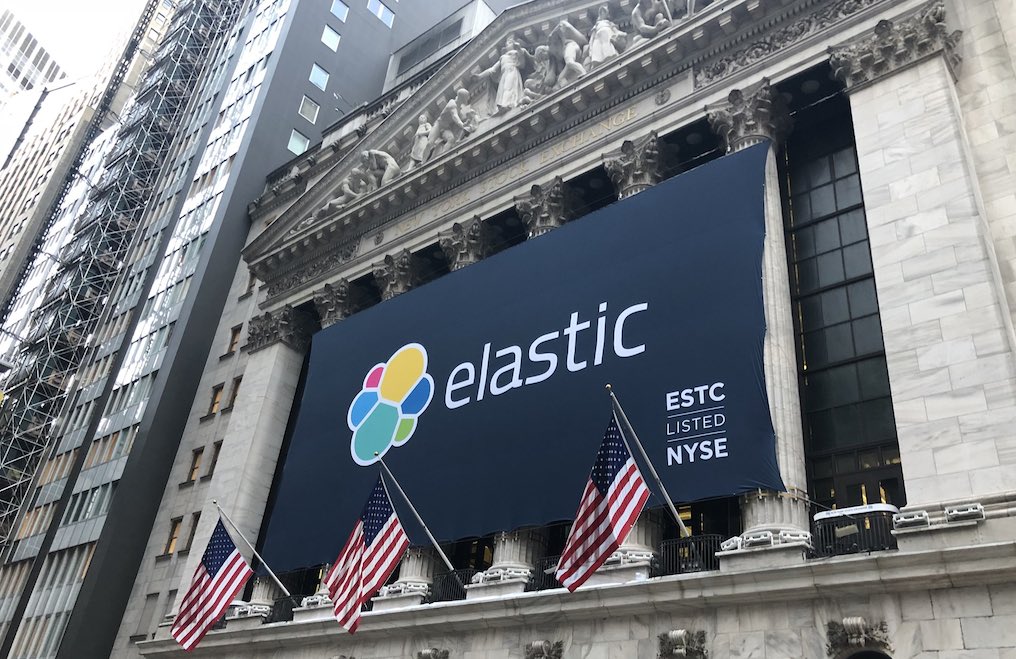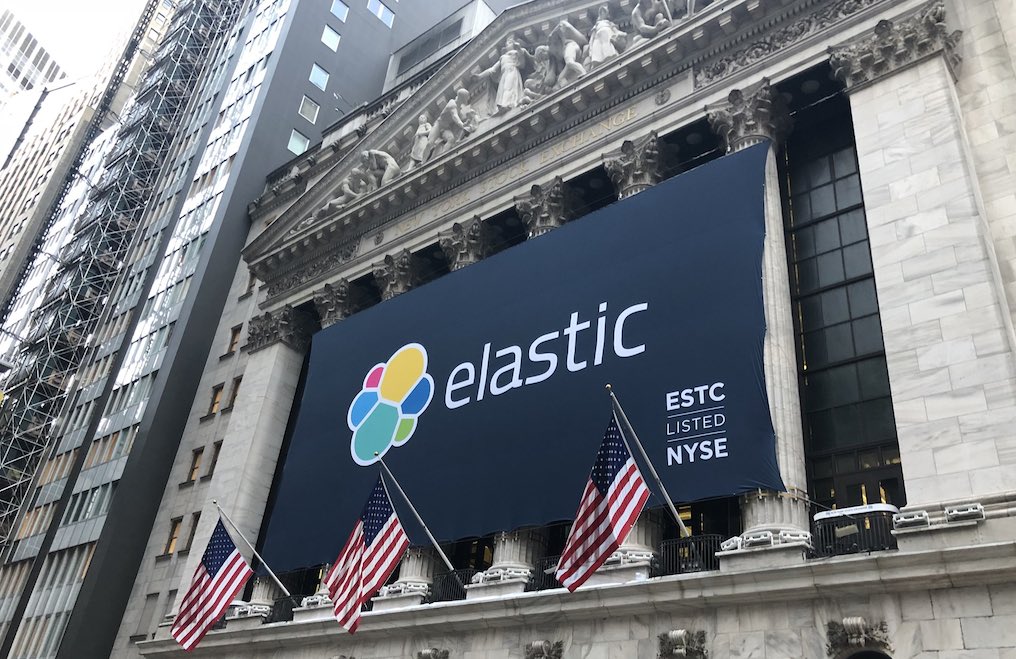Elastic N.V. (ESTC) Financial Analysis in the Tech Industry

- Elastic N.V. (NYSE:ESTC) has a Return on Invested Capital (ROIC) of -10.46% and a Weighted Average Cost of Capital (WACC) of 9.37%, indicating inefficient capital utilization.
- Comparative analysis shows that Datadog is the only company among peers generating returns above its cost of capital, with a ROIC of 1.24% and a WACC of 9.50%.
- Other competitors like MongoDB, Smartsheet, Alteryx, and HubSpot also struggle with generating returns above their cost of capital, though their ratios vary.
Elastic N.V. (NYSE:ESTC) is a company known for its search-powered solutions, which help businesses enhance their data search capabilities. The company operates in a competitive landscape alongside peers like MongoDB, Smartsheet, Alteryx, Datadog, and HubSpot. These companies are all part of the tech industry, focusing on data management and analytics solutions.
Elastic N.V. has a Return on Invested Capital (ROIC) of -10.46% and a Weighted Average Cost of Capital (WACC) of 9.37%. This results in a ROIC to WACC ratio of -1.12, indicating that the company is not generating returns above its cost of capital. This is a red flag for investors, as it suggests inefficient capital utilization.
Comparatively, MongoDB has a ROIC of -7.36% and a WACC of 9.75%, leading to a ROIC to WACC ratio of -0.76. Smartsheet's figures are -5.88% for ROIC and 7.92% for WACC, with a ratio of -0.74. Both companies, like Elastic, are not generating returns above their cost of capital, but their ratios are slightly better than Elastic's.
Alteryx presents a ROIC of -8.11% and a WACC of 5.84%, resulting in a ROIC to WACC ratio of -1.39. This is worse than Elastic's ratio, indicating even less efficient capital utilization. Meanwhile, HubSpot has a ROIC of -0.47% and a WACC of 12.33%, with a ratio of -0.04, showing a closer balance between returns and capital cost.
Datadog stands out with a positive ROIC of 1.24% and a WACC of 9.50%, resulting in a ROIC to WACC ratio of 0.13. This indicates that Datadog is the only company among the peers generating returns above its cost of capital, suggesting better capital efficiency and potential for growth.
| Symbol | Price | %chg |
|---|---|---|
| CRM.BA | 21250 | -0.33 |
| GOTO.JK | 60 | 1.67 |
| 012510.KS | 89100 | -3.03 |
| 462870.KS | 38350 | -1.17 |

Elastic N.V. (NYSE:ESTC) Sees Positive Analyst Outlook and Raises Guidance
- Shrenik Kothari from Robert W. Baird sets a new price target for Elastic N.V. (NYSE:ESTC) at $120, indicating a potential increase of about 42.36% from its current trading price.
- Elastic's recent first-quarter results have exceeded expectations, leading to an upward revision of its fiscal year 2026 guidance.
- The stock has shown volatility, trading between a low of $83.71 and a high of $94.44 today, with a yearly high of $118.84 and a low of $69.
Elastic N.V. (NYSE:ESTC) is a company known for its search-powered solutions, which help businesses enhance their data search capabilities. The company operates in a competitive landscape with peers like Splunk and Datadog. On August 29, 2025, Shrenik Kothari from Robert W. Baird set a new price target for Elastic at $120, indicating a potential increase of about 42.36% from its trading price of $84.30 at that time.
Elastic's recent first-quarter results have exceeded expectations, leading the company to raise its guidance for fiscal year 2026. This positive performance has likely influenced analysts to increase their forecasts, as highlighted by Benzinga. The upbeat results contribute to a favorable outlook for Elastic's future financial health, supporting the new price target set by Robert W. Baird.
Despite the positive outlook, the current stock price of ESTC is $84.80, reflecting a decrease of $2.99 or approximately -3.41% from the previous trading session. The stock has traded between a low of $83.71 and a high of $94.44 today. Over the past year, it has reached a high of $118.84 and a low of $69, showing some volatility in its trading range.
Elastic's market capitalization stands at approximately $8.95 billion, indicating its size and presence in the market. Today's trading volume for ESTC is 3,701,587 shares, suggesting active investor interest. The company's strong performance and raised guidance may continue to attract attention from investors and analysts alike.

Elastic N.V. (NYSE:ESTC) Sees Positive Analyst Sentiment and Stock Surge
Elastic N.V. (NYSE:ESTC) is a leading data-analytics company known for its innovative search-powered solutions. It competes with major tech firms like Splunk and Datadog in providing essential tools for search, logging, security, and analytics. This positions Elastic at the forefront of helping businesses unlock the value of their data.
Recently, UBS has reaffirmed its confidence in Elastic by maintaining a "Buy" rating and raising the price target from $95 to $125. This adjustment came after Elastic surpassed earnings and revenue forecasts in its fiscal first-quarter report, signaling strong financial health and growth potential. As of August 29, 2025, Elastic's stock price saw a significant increase, reaching $87.79, which is approximately a 5.39% rise. This surge is largely attributed to the positive investor sentiment following the company's impressive earnings performance.
Elastic's market capitalization stands at around $9.26 billion, with a trading volume indicating active investor interest. Over the past year, the stock has fluctuated between a high of $118.84 and a low of $69, showcasing its volatility but also the high potential for growth. Analysts remain optimistic about Elastic's future, especially in light of UBS's revised price target and the company's recent financial achievements.
- UBS maintains a "Buy" rating for Elastic, raising the price target from $95 to $125.
- Elastic's stock price increased by approximately 5.39%, reaching $87.79 after surpassing earnings and revenue forecasts.
- The company's market capitalization is around $9.26 billion, with a past year high of $118.84 and a low of $69.

Elastic Shares Tumble 10% on Tepid Fiscal 2026 Outlook Despite Strong Q4
Elastic N.V. (NYSE:ESTC) delivered a strong finish to its fiscal year with fourth-quarter results that topped expectations, but a cautious revenue outlook for the upcoming year triggered a 10% sell-off intra-day today.
The data analytics and search software company posted adjusted earnings of $0.47 per share on revenue of $388 million for the quarter, outpacing Wall Street estimates on both fronts. Revenue grew 16% year-over-year, driven largely by continued strength in its Elastic Cloud business, which surged 23% to $181.5 million.
However, the company’s guidance for fiscal 2026 left investors underwhelmed. Elastic projected annual revenue between $1.655 billion and $1.670 billion—below analyst expectations and implying a growth rate of about 12%, a deceleration compared to prior years.
Despite robust growth in large enterprise customers—with over 1,510 clients now generating more than $100,000 in annual contract value—investors appeared concerned about the company's ability to sustain its momentum in an increasingly competitive landscape, leading to sharp drop in the stock after the report.

Elastic N.V. (NYSE:ESTC) Struggles with Negative Return on Invested Capital
- Elastic N.V. (NYSE:ESTC) has a Return on Invested Capital (ROIC) of -10.46%, indicating inefficiency in utilizing capital compared to its Weighted Average Cost of Capital (WACC) of 9.41%.
- Comparative analysis shows that most peers, except Datadog, also have negative ROICs, suggesting a common challenge in the sector.
- Datadog stands out with a positive ROIC of 1.24% and a WACC of 9.55%, highlighting its effective capital utilization and making it more attractive to investors.
Elastic N.V. (NYSE:ESTC) is a company known for its search-powered solutions, including the popular Elastic Stack, which comprises Elasticsearch, Kibana, Beats, and Logstash. These tools are widely used for data search, logging, and analytics. Elastic operates in a competitive landscape with peers like MongoDB, Smartsheet, Alteryx, Datadog, and HubSpot, all of which offer various data and analytics solutions.
Elastic's Return on Invested Capital (ROIC) is -10.46%, which is concerning as it indicates the company is not generating returns above its Weighted Average Cost of Capital (WACC) of 9.41%. This negative ROIC suggests that Elastic is not efficiently utilizing its capital, which could be a red flag for investors. The ROIC to WACC ratio of -1.11 further highlights this inefficiency.
Comparatively, MongoDB has a ROIC of -7.36% and a WACC of 9.75%, resulting in a ROIC to WACC ratio of -0.76. Smartsheet's ROIC is -5.88% with a WACC of 7.92%, leading to a ratio of -0.74. Alteryx shows a ROIC of -8.11% against a WACC of 5.84%, with a ratio of -1.39. These figures indicate that these companies, like Elastic, are also struggling to generate returns above their cost of capital.
Datadog, however, stands out with a positive ROIC of 1.24% and a WACC of 9.55%, resulting in a ROIC to WACC ratio of 0.13. This positive ratio suggests that Datadog is effectively generating returns above its cost of capital, making it more attractive to investors. In contrast, HubSpot has a ROIC of -0.47% and a WACC of 12.39%, with a ratio of -0.04, indicating a slight inefficiency in capital utilization.
Overall, while Elastic and most of its peers are currently operating with negative ROICs, Datadog's positive return on invested capital relative to its cost suggests better financial health and growth potential. Investors may find Datadog more appealing due to its efficient capital utilization.

Elastic N.V. (NYSE:ESTC) Struggles with Negative Return on Invested Capital
- Elastic N.V. (NYSE:ESTC) has a Return on Invested Capital (ROIC) of -10.46%, indicating inefficiency in utilizing capital compared to its Weighted Average Cost of Capital (WACC) of 9.41%.
- Comparative analysis shows that most peers, except Datadog, also have negative ROICs, suggesting a common challenge in the sector.
- Datadog stands out with a positive ROIC of 1.24% and a WACC of 9.55%, highlighting its effective capital utilization and making it more attractive to investors.
Elastic N.V. (NYSE:ESTC) is a company known for its search-powered solutions, including the popular Elastic Stack, which comprises Elasticsearch, Kibana, Beats, and Logstash. These tools are widely used for data search, logging, and analytics. Elastic operates in a competitive landscape with peers like MongoDB, Smartsheet, Alteryx, Datadog, and HubSpot, all of which offer various data and analytics solutions.
Elastic's Return on Invested Capital (ROIC) is -10.46%, which is concerning as it indicates the company is not generating returns above its Weighted Average Cost of Capital (WACC) of 9.41%. This negative ROIC suggests that Elastic is not efficiently utilizing its capital, which could be a red flag for investors. The ROIC to WACC ratio of -1.11 further highlights this inefficiency.
Comparatively, MongoDB has a ROIC of -7.36% and a WACC of 9.75%, resulting in a ROIC to WACC ratio of -0.76. Smartsheet's ROIC is -5.88% with a WACC of 7.92%, leading to a ratio of -0.74. Alteryx shows a ROIC of -8.11% against a WACC of 5.84%, with a ratio of -1.39. These figures indicate that these companies, like Elastic, are also struggling to generate returns above their cost of capital.
Datadog, however, stands out with a positive ROIC of 1.24% and a WACC of 9.55%, resulting in a ROIC to WACC ratio of 0.13. This positive ratio suggests that Datadog is effectively generating returns above its cost of capital, making it more attractive to investors. In contrast, HubSpot has a ROIC of -0.47% and a WACC of 12.39%, with a ratio of -0.04, indicating a slight inefficiency in capital utilization.
Overall, while Elastic and most of its peers are currently operating with negative ROICs, Datadog's positive return on invested capital relative to its cost suggests better financial health and growth potential. Investors may find Datadog more appealing due to its efficient capital utilization.

Elastic N.V. (ESTC) Financial Analysis in the Tech Industry
- Elastic N.V. (NYSE:ESTC) has a Return on Invested Capital (ROIC) of -10.46% and a Weighted Average Cost of Capital (WACC) of 9.37%, indicating inefficient capital utilization.
- Comparative analysis shows that Datadog is the only company among peers generating returns above its cost of capital, with a ROIC of 1.24% and a WACC of 9.50%.
- Other competitors like MongoDB, Smartsheet, Alteryx, and HubSpot also struggle with generating returns above their cost of capital, though their ratios vary.
Elastic N.V. (NYSE:ESTC) is a company known for its search-powered solutions, which help businesses enhance their data search capabilities. The company operates in a competitive landscape alongside peers like MongoDB, Smartsheet, Alteryx, Datadog, and HubSpot. These companies are all part of the tech industry, focusing on data management and analytics solutions.
Elastic N.V. has a Return on Invested Capital (ROIC) of -10.46% and a Weighted Average Cost of Capital (WACC) of 9.37%. This results in a ROIC to WACC ratio of -1.12, indicating that the company is not generating returns above its cost of capital. This is a red flag for investors, as it suggests inefficient capital utilization.
Comparatively, MongoDB has a ROIC of -7.36% and a WACC of 9.75%, leading to a ROIC to WACC ratio of -0.76. Smartsheet's figures are -5.88% for ROIC and 7.92% for WACC, with a ratio of -0.74. Both companies, like Elastic, are not generating returns above their cost of capital, but their ratios are slightly better than Elastic's.
Alteryx presents a ROIC of -8.11% and a WACC of 5.84%, resulting in a ROIC to WACC ratio of -1.39. This is worse than Elastic's ratio, indicating even less efficient capital utilization. Meanwhile, HubSpot has a ROIC of -0.47% and a WACC of 12.33%, with a ratio of -0.04, showing a closer balance between returns and capital cost.
Datadog stands out with a positive ROIC of 1.24% and a WACC of 9.50%, resulting in a ROIC to WACC ratio of 0.13. This indicates that Datadog is the only company among the peers generating returns above its cost of capital, suggesting better capital efficiency and potential for growth.







